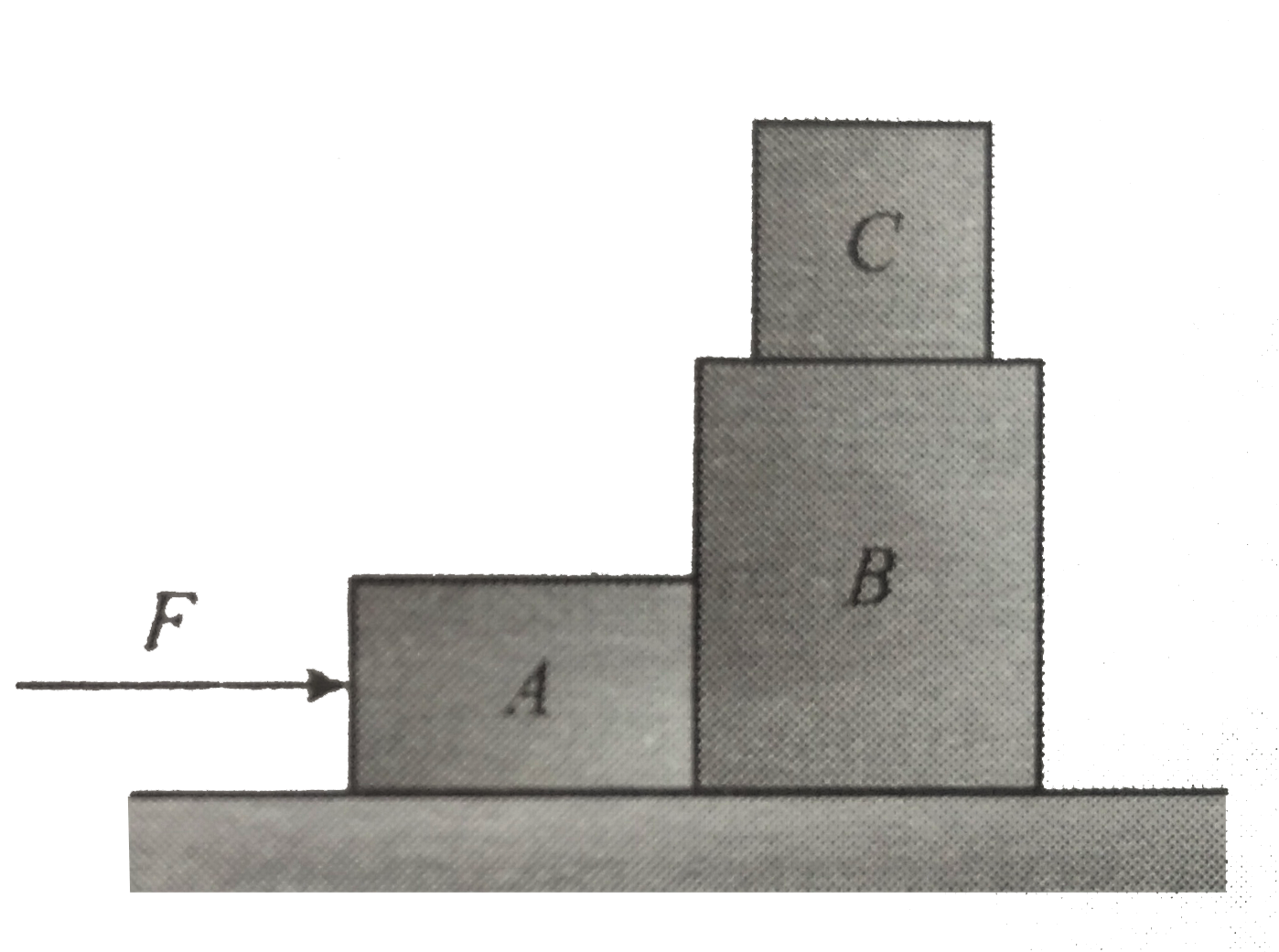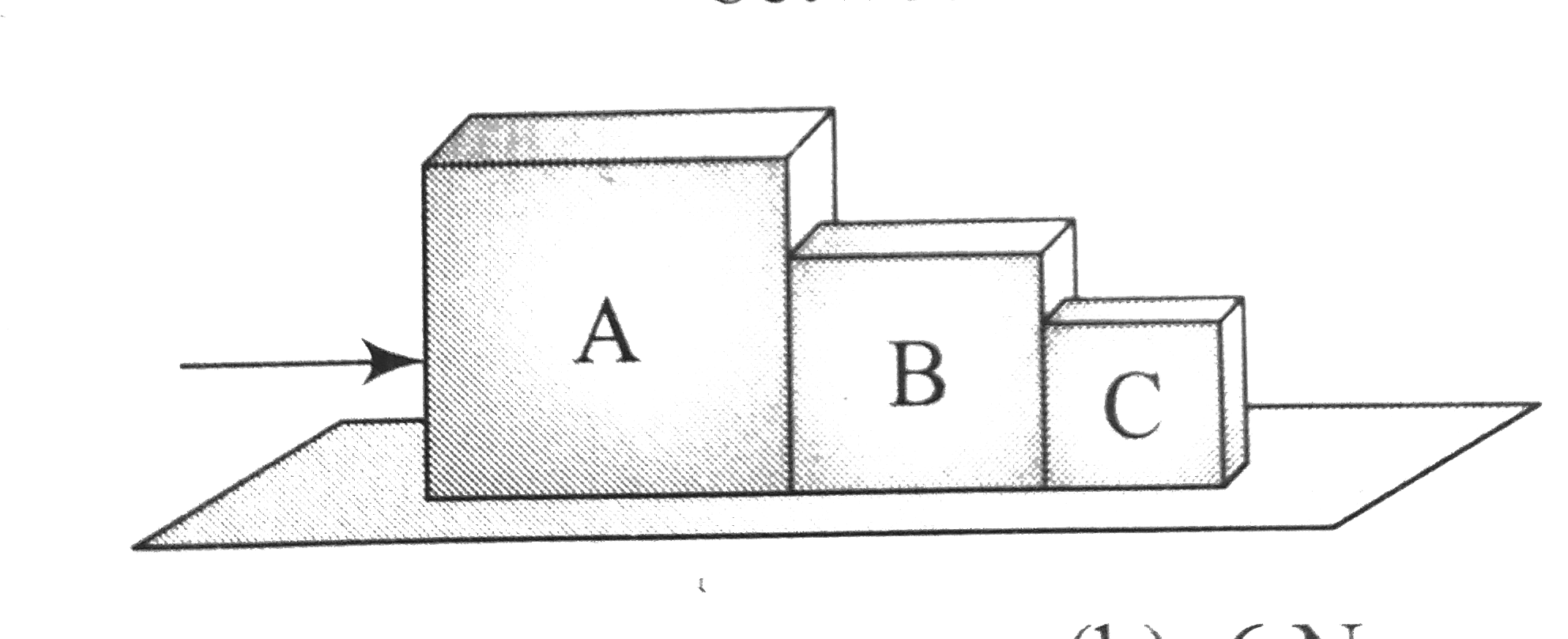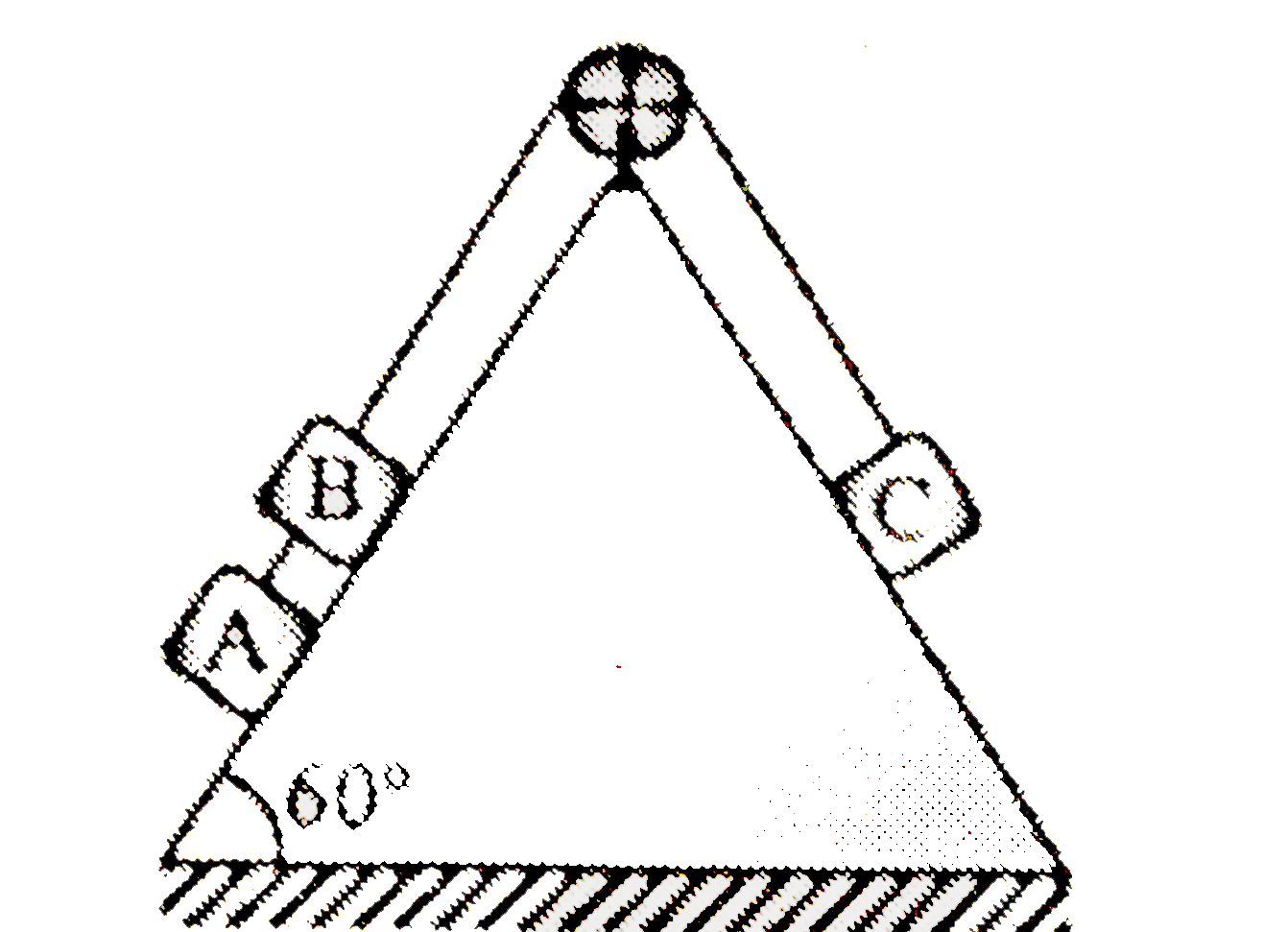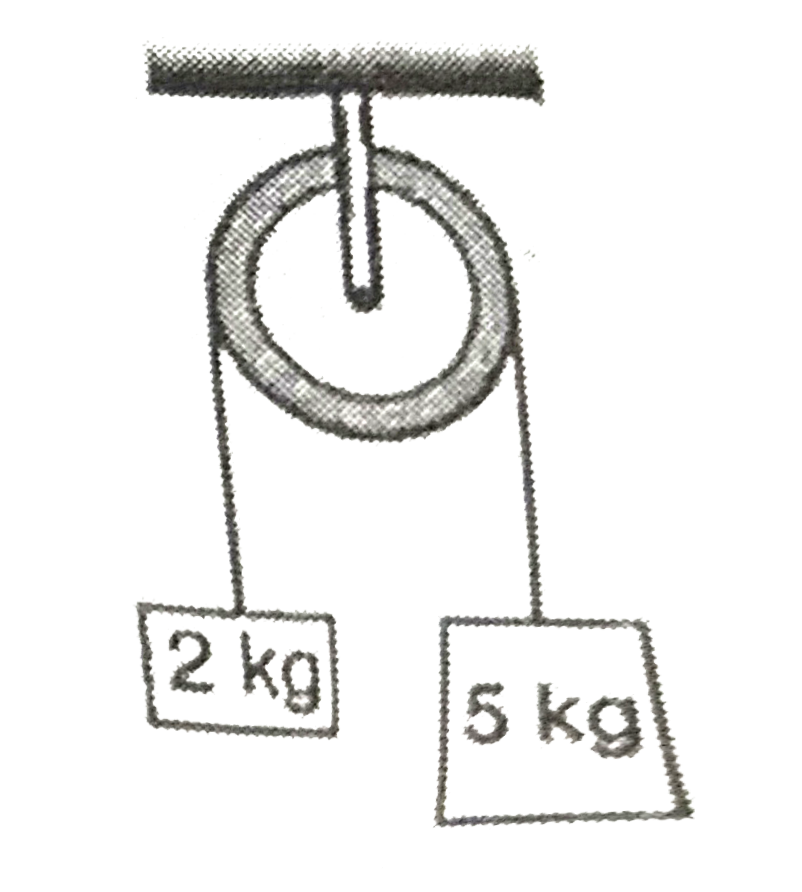The masses of blocks A,B,and C are 1kg, 2kg,and 0.5kg, respectively. All surfaces are smooth. If force F=50N acts as shown in fig. at the instant shown, find the force which A exerts on B and the acceleration of C.

Block C will not move and blocks A and B will move with common acceleration
aA=aB=50(1+2)=503ms−2
From free body diagram of B
N=mBaB=2×503=1003N.

Topper's Solved these Questions
- BOOK - CENGAGE PHYSICSCHAPTER - NEWTON'S LAWS OF MOTION 1EXERCISE - Exercise 6.319videos
NEWTON'S LAWS OF MOTION 1
- BOOK - CENGAGE PHYSICSCHAPTER - NEWTON'S LAWS OF MOTION 1EXERCISE - Exercise 6.413videos
NEWTON'S LAWS OF MOTION 1
- BOOK - CENGAGE PHYSICSCHAPTER - NEWTON'S LAWS OF MOTION 1EXERCISE - Exercise 6.111videos
NEWTON'S LAWS OF MOTION 1
- BOOK - CENGAGE PHYSICSCHAPTER - MISCELLANEOUS VOLUME 2EXERCISE - INTEGER_TYPE10videos
MISCELLANEOUS VOLUME 2
- BOOK - CENGAGE PHYSICSCHAPTER - NEWTON'S LAWS OF MOTION 2EXERCISE - Integer type1videos
NEWTON'S LAWS OF MOTION 2
Similar Questions
Three blocks A , B and C of masses 4kg , 2kg and 1kg respectively are in contact on a frictionless surface, as shown. If a force of 14Nisappliedonthe4kgblock,thenthecontactforcebetweenAandB is.
 View Solution
View SolutionTwo masses 10 kg and 20 kg respectively are connected by a massless spring as shown in figure force of 200 N acts on the 20 kg mass. At the instant shown is figure the 10 kg mass has acceleration of 12m/s2 what is the acceleration of 20 kg mass?
 View Solution
View Solution
Knowledge Check
- Question 1 - Select One
The masses of 10 kg and 20 kg, respectively, are connected by a light spring as shown in the figure. A force of 200 N acts upon the 20 kg mass. At the instant shown, the 10 kg mass the acceleration of 12m/s2. The acceleration of 20 kg mass is
 A12m/s2B4m/s2C10m/s2DZero
A12m/s2B4m/s2C10m/s2DZero - Question 2 - Select One
As shown in figure A, B and C are 1 kg, 3 kg and 2 kg respectively. The acceleration of the system is -
 A5ms−2B4.11ms−2C4ms−2D5.11ms−2
A5ms−2B4.11ms−2C4ms−2D5.11ms−2 - Question 3 - Select One
Three blocks A , B and C of masses 4kg , 2kg and 1kg respectively are in contact on a frictionless surface, as shown. If a force of 14Nisappliedonthe4kgblock,thenthecontactforcebetweenAandB is.
 A2NB6NC8ND18N
A2NB6NC8ND18N
Two blocks of masses 10 kg and 20 kg are connected by a massless spring and are placed on a smooth horizontal surface. A force of 200 N is applied on 20 kg mass as shown in the diagram. At the instant, the acceleration of 10 kg mass is 12ms−2, the acceleration of 20 kg mass is:
 View Solution
View SolutionThree blocks A, B and C of masses 5 kg, 10 kg and 15 kg respectively connected by two ideal strings are present on a smooth horizontal surface. An external horizontal force of 30 N acts on the block A to pull the system. Find the difference in the tensions in strings connecting A and B and, B and C.
View SolutionTwo blocks of masses m1=2kgandm2=5kg hang over a massless pulley as shown in the fig A force F0=100N acting at the axis of the pulley accelerates the system upwards Find
(a) the acceleration of each mass
(b) the tension in the string.
 View Solution
View SolutionThe masses of 10 kg and 20 kg respectively are connected by a massless spring as shown in figure. A force of 200 N acts on the 20 kg mass. At the instant shown, the 10 kg mass has acceleration 12m/sec2 . What is the acceleration of 20 kg mass
 View Solution
View SolutionThe masses of 10kig and 20kg respectively are connected by a massless spring as shown in figure. A force of 200N acts on the 20kg mass. At the instant shown, the 10kg mass has acceleration 12m/sec2 . What is the acceleration of 20kg mass?
 View Solution
View Solution

